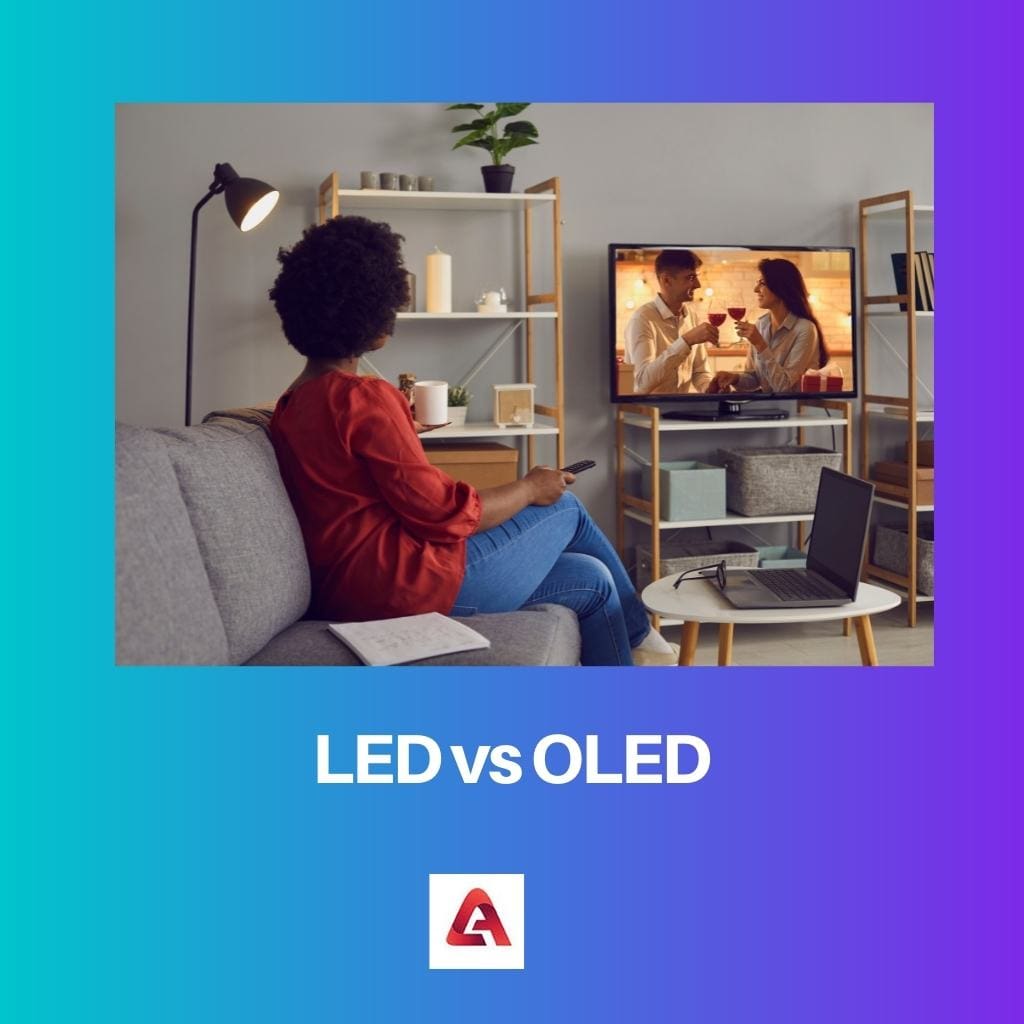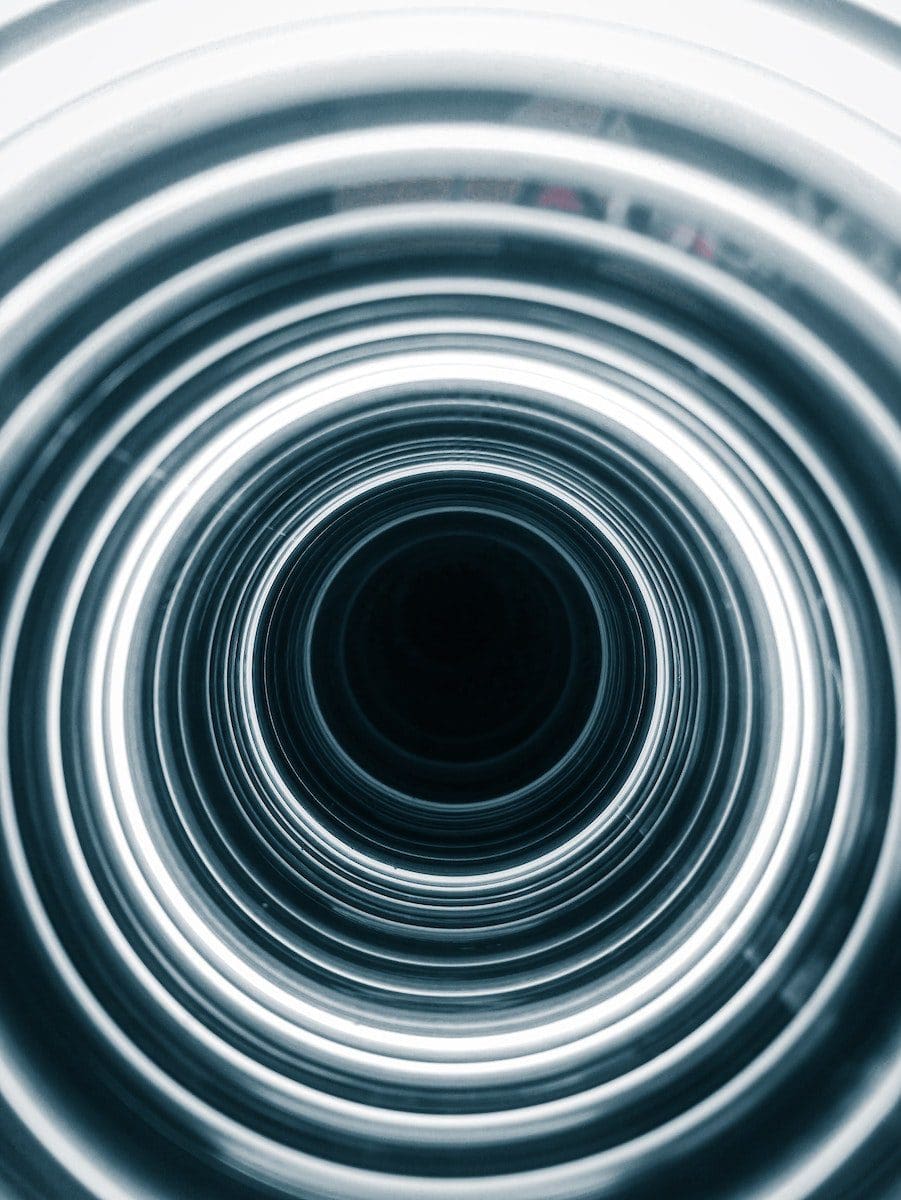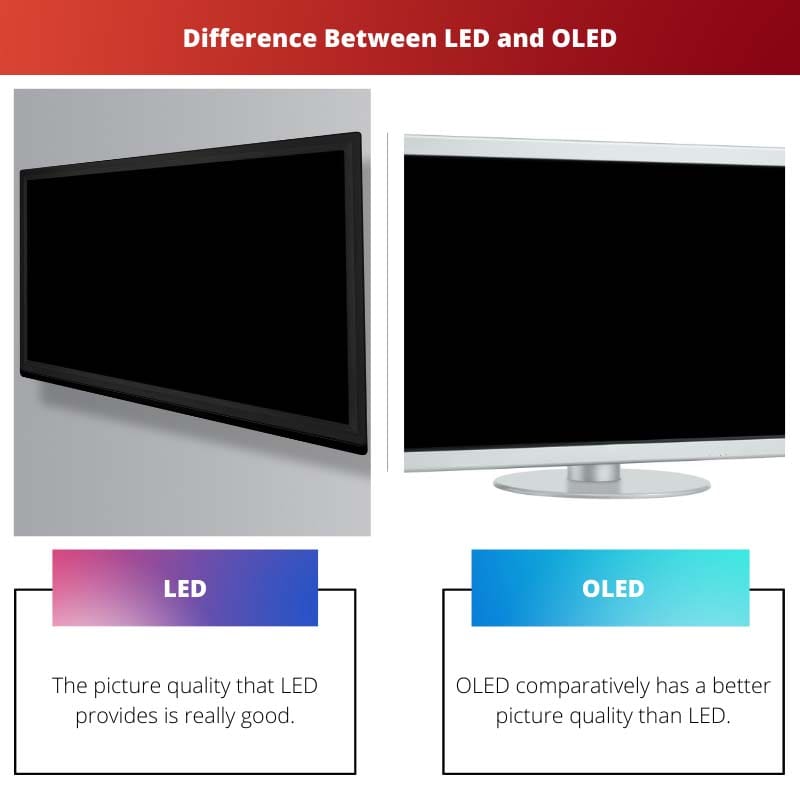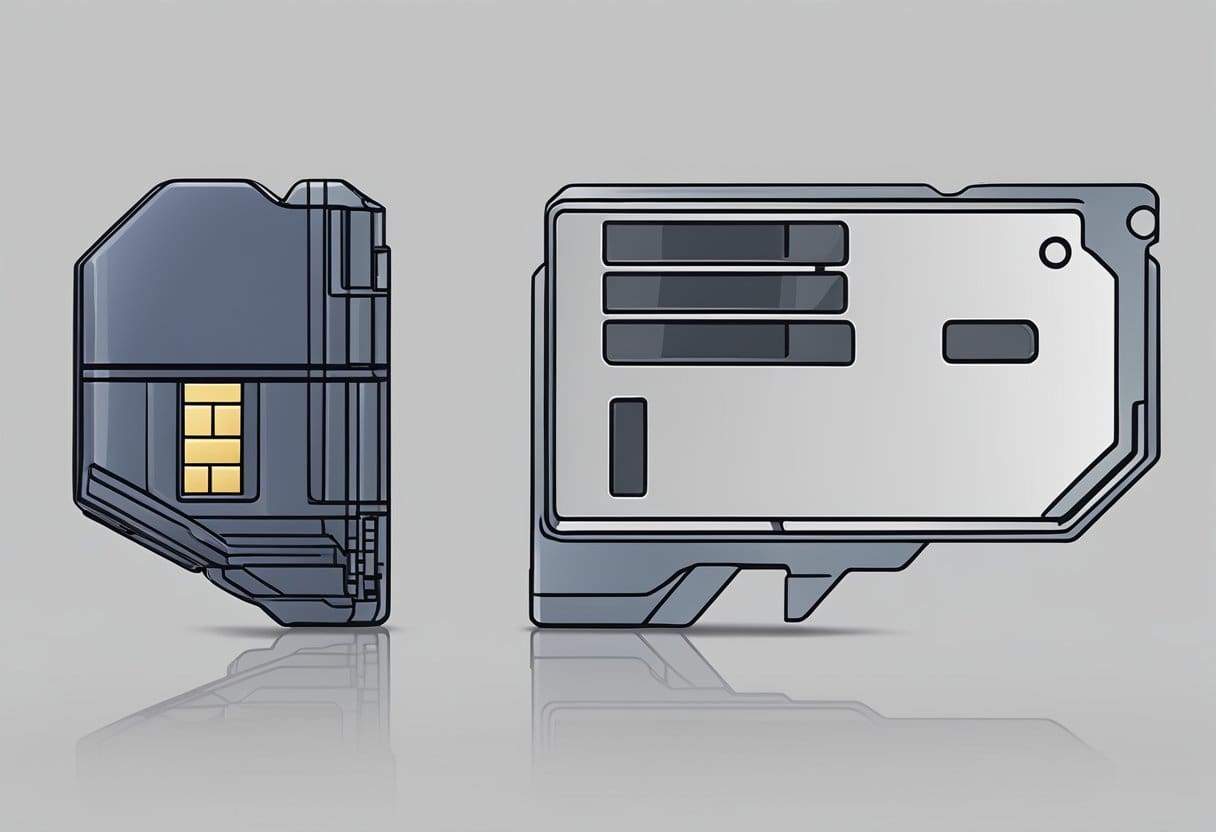The major point to note is that OLED has a wider viewing angle of 84o unlike that of LED, which has only an angle of 54o. OLED also has a dominant black level from that of LED.
Key Takeaways
- LED stands for Light Emitting Diode, while OLED stands for Organic Light Emitting Diode.
- LEDs are brighter and more energy-efficient than OLEDs, but OLEDs have a wider viewing angle and better color accuracy.
- LEDs are commonly used in backlights for televisions and computer monitors, while OLEDs are used for high-end televisions and mobile devices.
LED vs OLED
LED (Light Emitting Diode) is a semiconductor device that emits light when an electric current is applied; they are commonly used in lighting, displays, and electronics. OLED (Organic Light Emitting Diode) pixels emit their light, which allows for better contrast, deeper blacks, and energy efficiency in OLED displays, and it is energy efficient.

LED works on the principle of electroluminescence, and it was invented by H.J. Round in 1907. OLED and LED share the same principle, and OLED is a developed version of LED.
OLED (Organic light-emitting diode) is a type of LED (Light-emitting diode) in which the film of the organic compound has a layer of emissive electroluminescent, which gives out light in retort to an electric current passed through it. Conversely, LED is a semiconducting light source that emits light when electric current flows through it.
Comparison Table
| Parameters of Comparison | LED | OLED |
|---|---|---|
| Power | LED consumes more power than OLED | OLED consumes less power than LED |
| Quality | The picture quality that LED provides is really good | OLED comparatively has a better picture quality than LED |
| Brightness | It is brighter than OLED | Gives less brightness |
| Size | It has a large size | Compared to LED, it is comparatively smaller |
| Response time | It has a pretty slow response time when compared to OLED | The response time given by this is fast. |
| Intensity | It has very low intensity | It has a high intensity |
What is LED?
LED (Light-emitting diode) is a device that works on the principle of Electroluminescence and was invented in 1907 by H.J Round.
Its first production took place in October 1962. It is a semiconductor light source that gives out light when an electric current passes through it.
The electrons in the semiconductor combine with the electron holes and release energy in the arrangement of photons.
LEDs were able to replace small incandescent bulbs in lamps etc. and were later used for rooms and outdoor area lighting.
LEDs have many advantages over small bulbs that were used before, which include low energy consumption and a longer lifetime.
They have faster switching and are small, which is a very big advantage as even though they are small, they emit a good amount of light to a far range.
LEDs are mostly used as gauge lights for electronic devices. They are also used in several other devices, including showpieces and flashlights.
LED has a voltage source linked to the positive side of the anode, and the negative side is linked to the cathode side. LED is very technical, but its uses and practical applications are almost limitless.

What is OLED?
OLED (organic light-emitting diode) is a type of Light-emitting diode in which the film of the organic compound has a layer of emissive electroluminescent which gives out light in retort to an electric current passed through it.
There are two main types of OLED; those based on employing polymers and those based on small molecules.
OLED emits visible light and hence doesn’t require a backlight, unlike LED. OLEDs are used on television screens, portable smartphones, and PDAs.
Andre Bernanose, with the help of some co-workers at Nancy University (France), made their first observations of electroluminescence in the 1950s.
In 1999, companies like Kodak and Sanyo made their partnership to research and develop OLED displays.
OLEDs have a surface light source, and they produce diffused light. They have a pretty low intensity and are easy to dissipate heat.
One big advantage is that they are very thin and lightweight, which is very attractive to customers.
The OLED display is a pretty different method from others. The display is fabricated by arranging all the small lighting pixels of RGB (red, green, and blue light) side by side.
The structure that OLED lighting follows is that R+G+B= white light.

Main Differences Between LED and OLED
- The backlight is essential for the LED light to work, whereas OLED does not need a backlight for illumination because carbon is an essential light source.
- The display angel that OLED and LED have are 84o and 54o, respectively. Although the picture quality provided by LED is excellent, OLED has a comparatively better picture quality than LED. When the LED screen is seen from the centre, the quality is good, but when seen from either side, deterioration can be seen.
- LED has a thinner screen compared to LCD (liquid crystal display), but OLED has a thinner screen compared to LED. LED, although, has a greater screen size of 100 inches compared to OLD, whose latest version has a screen of 90 inches.
- When compared to LED, OLED takes in less energy for its work. This is mostly because OLED has the property self-illuminate without the use of a backlight to initiate any process to take place.
- LED has a point light source with high directivity. It also has a high intensity and is hard to dissipate heat. On the other hand, OLED has a surface light source with diffused light. It has a low intensity in general and is easy to dissipate heat. It is lightweight and thin, unlike LED.





